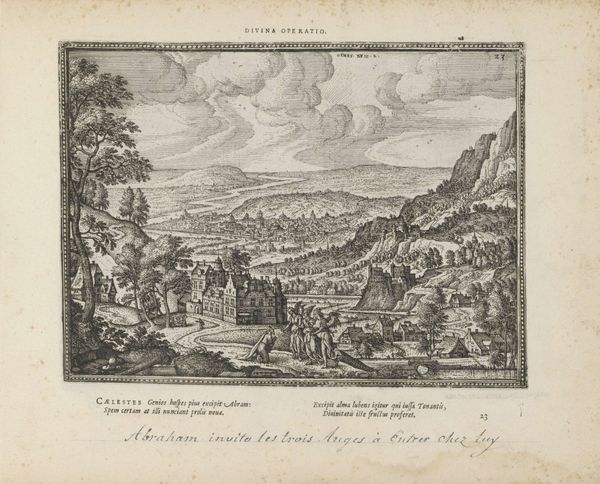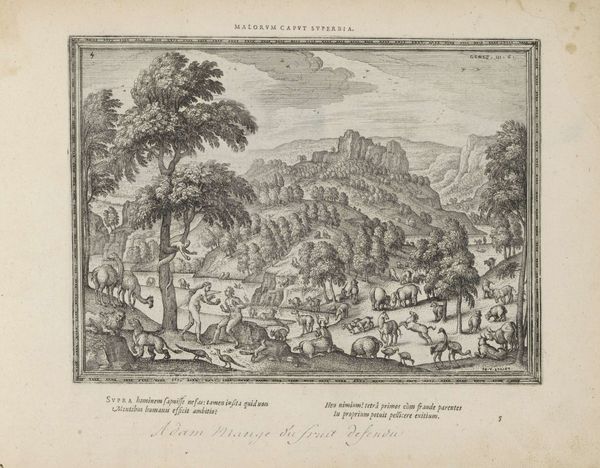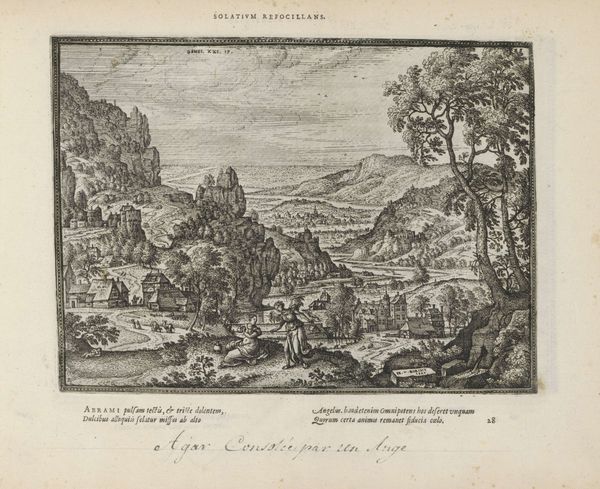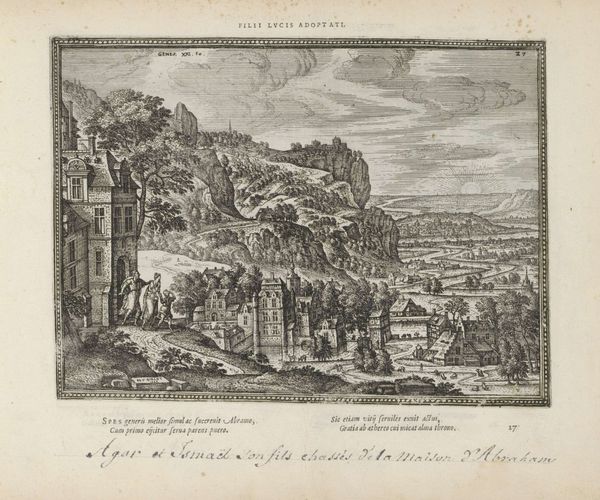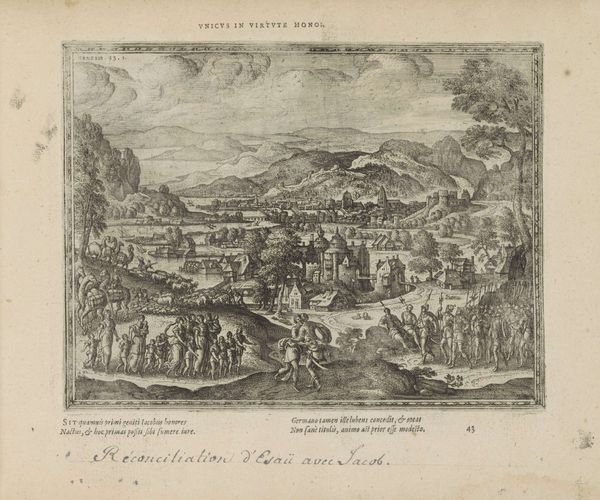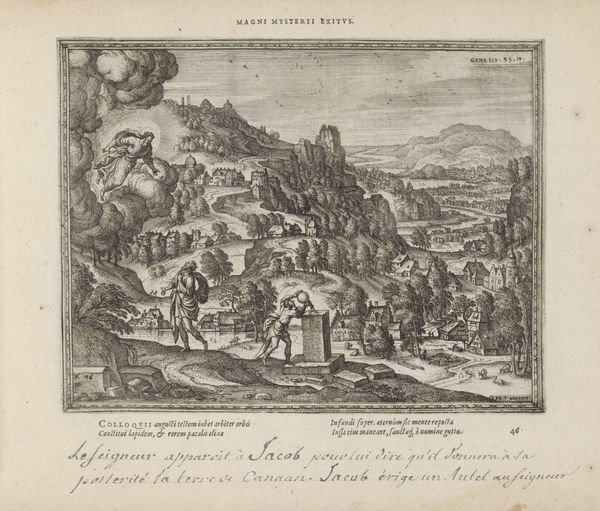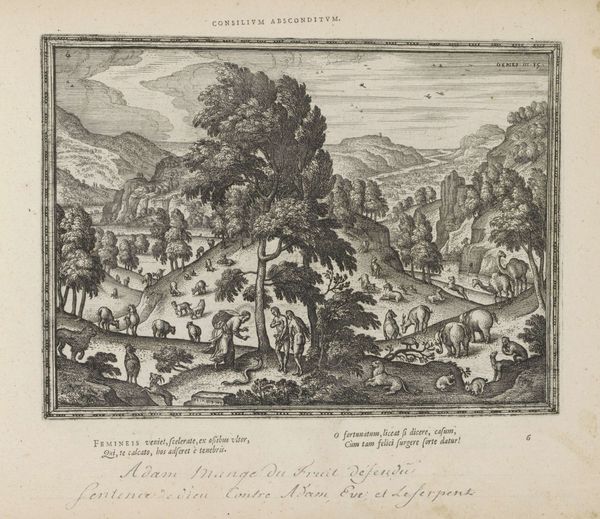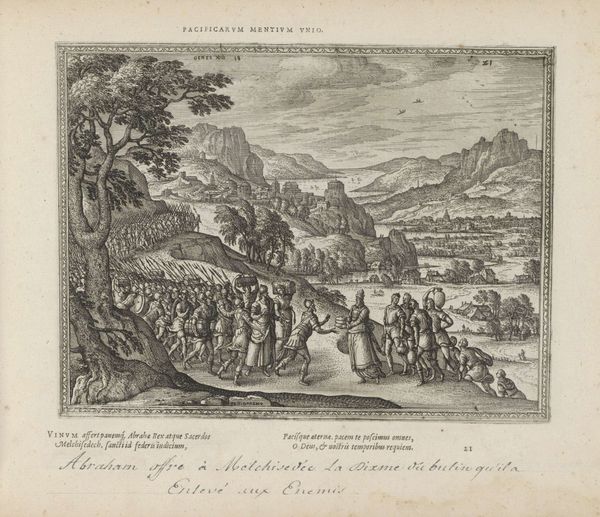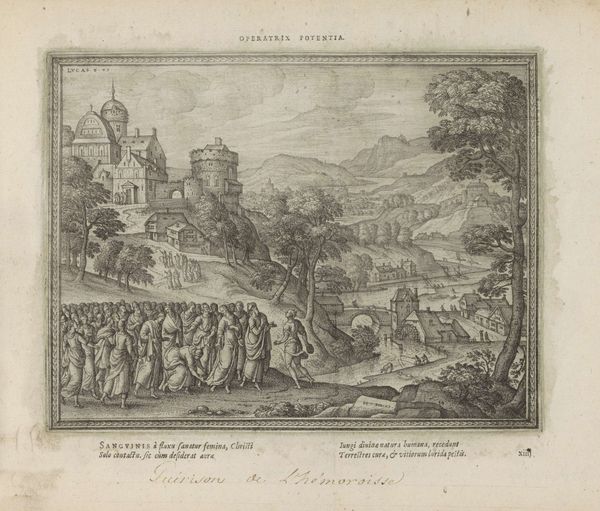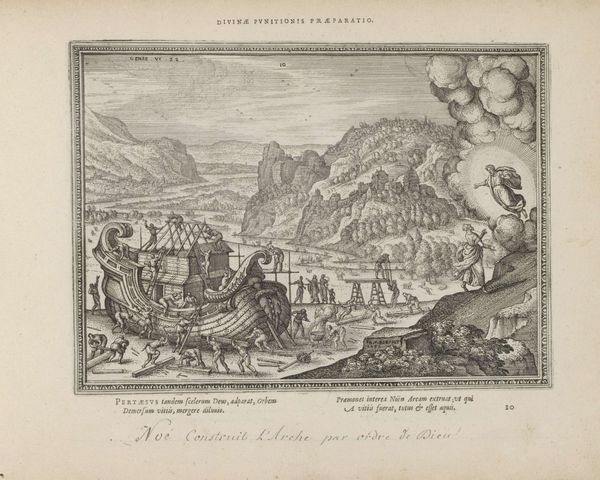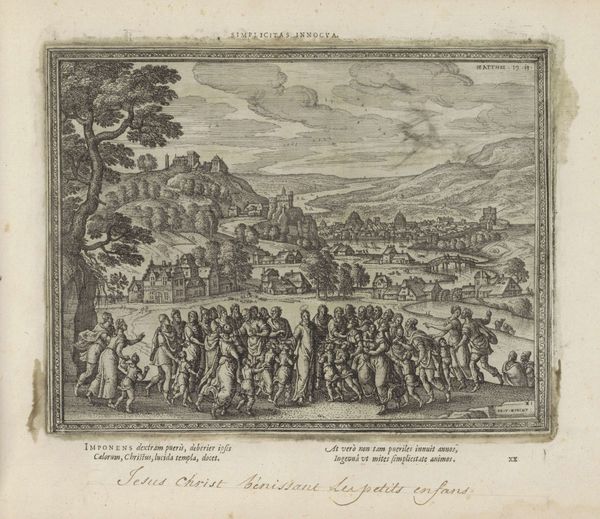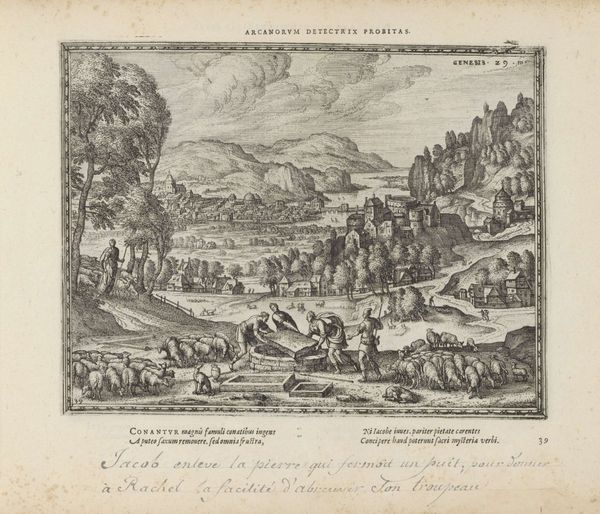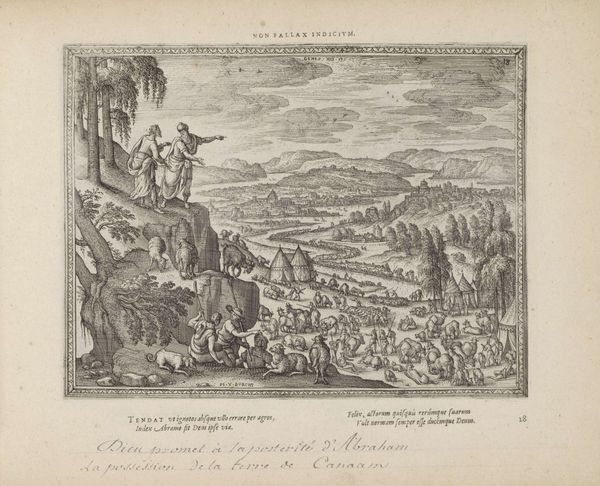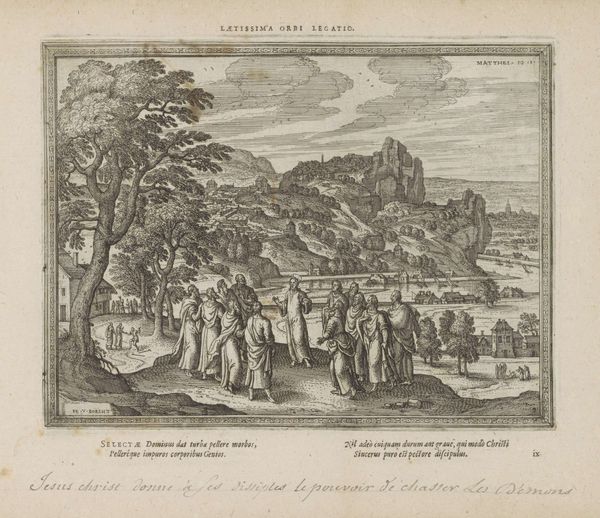
print, etching, engraving
#
narrative-art
# print
#
etching
#
landscape
#
cityscape
#
history-painting
#
northern-renaissance
#
engraving
Dimensions: height 189 mm, width 246 mm
Copyright: Rijks Museum: Open Domain
Curator: Here we have "Lot Leaving Sodom," an engraving and etching created sometime between 1582 and 1613, attributed to Pieter van der Borcht the Elder, held in the collection of the Rijksmuseum. Editor: Oh, that’s fascinating. My first impression is… chaotic. There’s so much detail packed into this relatively small space. I'm instantly drawn to the sense of urgency, but it's offset by this serene, almost classical landscape. Curator: Indeed. Van der Borcht's work displays an interesting tension between the detailed rendering of the figures in the foreground—Lot, his daughters, perhaps angels—and the panoramic vista of Sodom behind them, which is teetering toward utter destruction. Consider how the composition is structured. The figures are compressed toward the left side, while the fiery cityscape stretches across the horizon. Editor: Right, there’s almost a diagonal division. On one side, escape, movement… and then this terrifying, smoldering landscape dominating the right. What is particularly interesting to me is the somewhat disengaged body language of the group of women and men fleeing this disaster—as if already they have gone through an incredible ordeal, their bodies carrying them more than their will does. Curator: That contrast is key. Formally, we can observe the interplay of line and shadow. Notice how the dense hatching creates a palpable sense of depth and texture, particularly in the billowing smoke and architectural details. The artist uses graphic tension as a mode of communicating a complex spiritual and historical lesson. Editor: A spiritual and historical lesson indeed! I love how the artist placed them into a very mundane landscape… there are normal houses in the middle, animals roaming, and common people around; as if nothing has ever happened or is about to occur, to underscore, once again, this juxtaposition between the daily normal and utter chaos, or spiritual and material worlds. Curator: Precisely. Van der Borcht masterfully intertwines narrative elements and stylistic techniques, allowing us a window into not just the historical scene, but also a broader moral commentary, by employing the graphic language of his period to communicate profound themes of morality, judgment, and salvation. Editor: It's stunning how such a precise, almost scientific rendering can evoke such visceral emotions—dread, anxiety, the longing for escape… it's a stark reminder of our own fragile existence within the sweep of history. And, perhaps, of the importance of a good, swift exit when things go south.
Comments
No comments
Be the first to comment and join the conversation on the ultimate creative platform.
